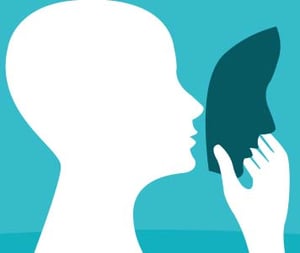Equivalent infringement
 "I can do that too!" Do you ever think that when you look at inventions? An innovation you can copy but with a few minor differences. That makes it unique. Right? Not quite. Copying someone else's invention with a few minor differences may seem like a clever way to get around a patent. But beware: if you decide to do this, you may be infringing by equivalence.
"I can do that too!" Do you ever think that when you look at inventions? An innovation you can copy but with a few minor differences. That makes it unique. Right? Not quite. Copying someone else's invention with a few minor differences may seem like a clever way to get around a patent. But beware: if you decide to do this, you may be infringing by equivalence.
literal infringement versus infringement under the doctrine of equivalents.
You infringe someone else's patent as soon as you make something that someone else has protection for. The claims of the patent tell you what is protected. There are two types of infringement. The first one is the most obvious one: literal infringement. In this case, another person makes exactly what is already patented. Everything matches perfectly.
If there is no literal infringement, there may still be infringement under the doctrine of equivalents. I would like to explain this with an example of an aerodynamic bicycle. The bike looks the same as another pre-existing aerodynamic bike, but there are some minor differences. For example, the handlebars are mounted slightly differently, although that doesn't really matter with regard to the position of the handlebars. As a result, the product is not 100 percent in line with what is stated in the claims of the patent. You might think this is not infringement but then it may be infringement under the doctrine of equivalents. This means that even though there are differences, you are still infringing because the essence of the product is the same.
Infringements under the doctrine of equivalents in the parmaceutical industry
Infringements under the doctrine of equivalents are fairly common in the pharmaceutical industry. Not because people try to steal each other's ideas, but because it is not always clear in advance what does and doesn't work. When developing drugs there are different active ingredients. The patent is applied for when it is clear that a particular ingredient works but it is not entirely clear yet which other ingredients similar to it also have the same effect. The protection is then aimed at a certain combination of ingredients, while other combinations may subsequently turn out to work as well. If competitors develop the same drug with this alternative ingredient, is there equivalence? That depends on what the applicant themselves says about it in the patent and how the patent application is worded. So this should be done very carefully and not at too early a stage when it is not yet clear exactly what should be covered by the protection.
Prevent infringement and dig a little deeper
You now know what infringement under the doctrine of equivalents is and that it means that a number of details of an innovation are different. If, while developing an invention, you see that you are not committing literal infringement, do not think that you are free to go ahead and market it. Together with a patent attorney you should dig a little deeper into the patent. How should it be interpreted, could it be that what you came up with is in fact within the protection of the patent? Thanks to their experience and knowledge of the legal side of patents, patent attorneys are in a good position to offer advice on this.
If you want to find out more about infringement under the doctrine of equivalents or patents in general then please do not hesitate to contact me. I would be happy to share my thoughts on this with you!

About the author
I studied mechanical engineering and materials science at Delft University. I joined EP&C as a trainee patent attorney in 2015 and qualified as a Dutch and European Patent Attorney in 2021. In...
More about Thomas >